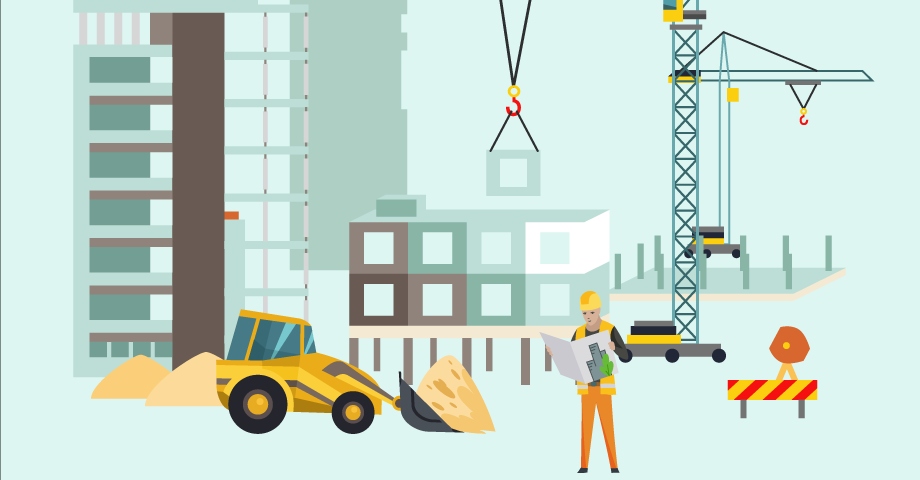Lien waivers, or the formal, legal document exchanged between a contractor, subcontractor, material supplier, or other parties to the construction project regarding payment, are necessary to mitigate risk in the development process. By issuing a lien waiver, you ensure all parties involved in the construction process have been paid and waive or release their right to put a lien on the property. Without a lien waiver, you risk financial or legal liability, and these complications can delay the development process and lead to lower returns. On a complex development project, it’s a best practice to issue lien waivers for all financial transactions with contractors, subcontractors, and vendors. Obtaining and reviewing legal documents might seem a tedious task, but it’s necessary to ensure your project is legally protected and financially sound. Building a solid understanding of the different types of lien waivers, how to fill out the forms, and the best practices for document management, can help you navigate the process more smoothly.
Here’s everything you need to know about lien waivers, from the different types and applications to common mistakes developers make in the issuing process:
Understanding Lien Waivers
Lien waivers are a document typically filed by construction providers (contractors, subcontractors, or suppliers) to the property owner to waive future lien rights in exchange for payment. The waivers can waive full rights to the project, or just certain rights on a portion of the project for which payment has been received. In other words, the signer agrees that all dues have been paid and that they have no right to seize property or goods once the lien waiver is signed. The process exists to protect all parties in the construction process and the forms are typically requested at the time of payment.
The use and management of lien waivers, which act as both a receipt of payment and prevent liens from being placed mid-project, are necessary to keep complex development on track. Liens against a property can pose financial and legal complications for your project, and sorting these issues out will inevitably slow down your construction timeline. In addition, lien wavers speed up the process for parties getting paid and promote positive business relationships with vendors. Keeping payments coming in on time will mean contractors remain motivated and will bolster your reputation in the industry.
Types of Lien Waivers
In order to use lien waivers correctly, it’s important to understand the four main types, as well as when each is appropriate. Lien waivers can be either conditional or unconditional, but since waivers have different functions for progressive or final payments, there are also partial and final designations.
Here are the four main types of lien waivers and how and when you’ll use them in the development process:
Partial Conditional Lien Waiver – Partial conditional lien waivers are used when a partial payment is made over the course of a project, and state the party receiving the payment waives the right to put a lien on the property in the specific amount requested. However, the agreement is conditioned upon the receipt of payment and goes into effect when the transaction has occurred.
The use of partial conditional lean waivers is mutually beneficial; the party receiving payment will maintain the right to file a lien until payment is processed, while the party making the payment will never face double payment by making the payment and also facing a lien.
Partial Unconditional Lien Waiver – Partial unconditional lien waivers are also used to make partial payments during a project but go into effect as soon as the party signs, regardless of whether or not payment has been received. In most cases, unconditional lien waivers, which waive the right to put a lien on the project, are signed by the contractor after payment is deposited and cleared by the bank.
In order to maintain positive relationships with vendors, it’s important to ensure unconditional lien waivers are properly dated, the amount stipulated is correct, and the documentation is used most often after receipt of payment.
Final Conditional Lien Waiver – Final conditional lien waivers are used when the final payment for a project is made but are still conditional on the party receiving payment. The document waives the vendor or other party’s right to put a lien on the property in the final amount.
Final Unconditional Lien Waiver – Final unconditional lien waivers are used when the final payment on a project is made, and parties waive the rights to put a lien on the property in the final amount on a signing. Unconditional waivers are effective immediately, regardless of whether or not payment is received or cleared by the claimant.
For developers, both partial and final waivers are likely to be used over the lifecycle of a project as part of both payment plans and risk mitigation strategies. However, choosing between conditional or unconditional waivers will depend on your payment plan for each individual project and how funds are being dispersed from financial partners.
How to Use a Lien Waiver
Before undertaking a major development project, it’s important for you to understand how to obtain and fill out a lien waiver. State and local governments have different policies and regulations around lien waivers, and in some states, certain criteria are required to be on the documents.
For example, everyone on a California construction project must exchange the same lien waiver forms. Currently, 12 states have standardized lien waiver forms you will be required to use, and the good news is boilerplate language can make the contents of the forms more straightforward.
In general, most waiver forms should include basic information about the project, services, and payment information, including:
- Name of the Claimant: The name of the party who is receiving payment and will eventually sign the form.
- Name of the Customer: The name of the party who hired the contractor, subcontractor, or vendor and who will eventually issue the payment.
- Job Location: The address for the project’s location where the work was completed.
- Through Date: The through date determines what is waived and what isn’t on a project and is vital to get correct. You should put down the exact date the work was performed and completed and not the date of payment, which isn’t relevant here.
- Amount of Payment: The amount of money the claimant is owed for completing the work.
- Exceptions: The exceptions are for anything you feel should be exempted from the payment, though it’s important to note some exceptions, such as retainage, will be exempted by default.
- Claimant’s Signature: The signature from the party who is receiving the payment and surrendering rights to put a lien on the property.
- Claimant’s Title: The claimant’s job title is indicative of the work completed on the project.
- Date of Signature: The date the form is being signed.
- Additional Terms and Conditions: On forms that aren’t state mandated, you might include other stipulations or requirements around payment to claimants.
The only states currently requiring a lien waiver to be notarized are Wyoming and Mississippi, and for developers outside of those states, it’s important to be aware notarization can potentially render the form void. It’s best to check with your state’s jurisdiction and policies before compiling and filing the lien waiver.
Legal Implications
The failure to issue or mishandling of lien waivers can have major implications for your development project. Lien waivers are, in effect, a contractual agreement between you and the general contractor, subcontractor, and vendors. Making sure the terms of the lien waiver are clear and all parties understand their rights and obligations is essential. Working with an attorney who understands the lien waiver process and can review or draft lien waivers is a best practice for developers as well.
Filing a lien waiver with errors can have severe consequences for both your project and your overall reputation. First, contract disputes can accrue additional legal expenses, as an attorney may need to be hired to resolve the issue. Litigation can get expensive, and result in reputational damage, as vendors will not want to work with teams perceived to be untrustworthy or incapable of fulfilling financial obligations.
Legal implications of lien waivers can also vary regionally, and the documents don’t protect against other forms of legal recourse, such as contractors filing a breach of contract lawsuits. In general, though, lien waivers protect against major legal or financial concerns, including corrupt vendors or fraud. Over the course of a complex development project, you’re likely to work with hundreds of vendors, and outdated systems for compiling proposals, change orders, and lien waivers can make fraudulent vendors difficult to detect. Modern real estate development software can help your team keep track of critical documents, providing protection from a variety of liabilities over the lifecycle of your project.
Common Misconceptions and Mistakes
One common mistake around lien waivers is thinking payment of a contractor guarantees other claimants, like subcontractors and suppliers, are paid. Every claimant will need to sign the waiver in order to guarantee a lien is not filed against the property. On a project with tiers of contractors, it’s vital to ensure every contractor is issued a waiver, as doing so will ensure payment for all who did work on the property and prevent a lien from being filed unexpectedly.
Another common error developers might make is confusing lien waivers with a release of lien, as the documents are not the same and serve distinct functions. Lien releases are a document filed in public land records to show a lien has been removed, as once paid, contractors have an obligation to remove any lien filed against a property. Other construction languages, such as a lien cancellation or no lien clause, are also different from a lien waiver and should be noted to avoid confusion.
The inability to handle, manage, and organize lien waivers is another concern you might encounter in the development process. On a complex real estate development project, you’re likely to work with hundreds of vendors, and important paperwork can easily get lost in outdated legacy systems. Northspyre’s platform can help you automate the compilation and tracking of lien waivers, along with other important documents, including bids, contracts, and change orders. The AI-powered platform gives you and other stakeholders important visibility over lien waivers with a real-time dashboard, allowing you to demonstrate to investors that vendors are being paid and budget goalposts are being met.
Lien waivers are a critical component of project management, minimizing risk for both development stakeholders and construction teams alike. Issuing lien waivers on a project also speeds up the payment process, ensuring contractors, subcontractors, and suppliers are paid on time, the project timeline is not disrupted, and your reputation stays intact. Having a document library in place to manage lien waivers and other critical forms can help you ensure your next project comes in on time and under budget.
Download our whitepaper on Commercial Real Estate Development Needs To Rethink Its Relationship with Excel to learn more about how you improve workflows and manage documents better.



